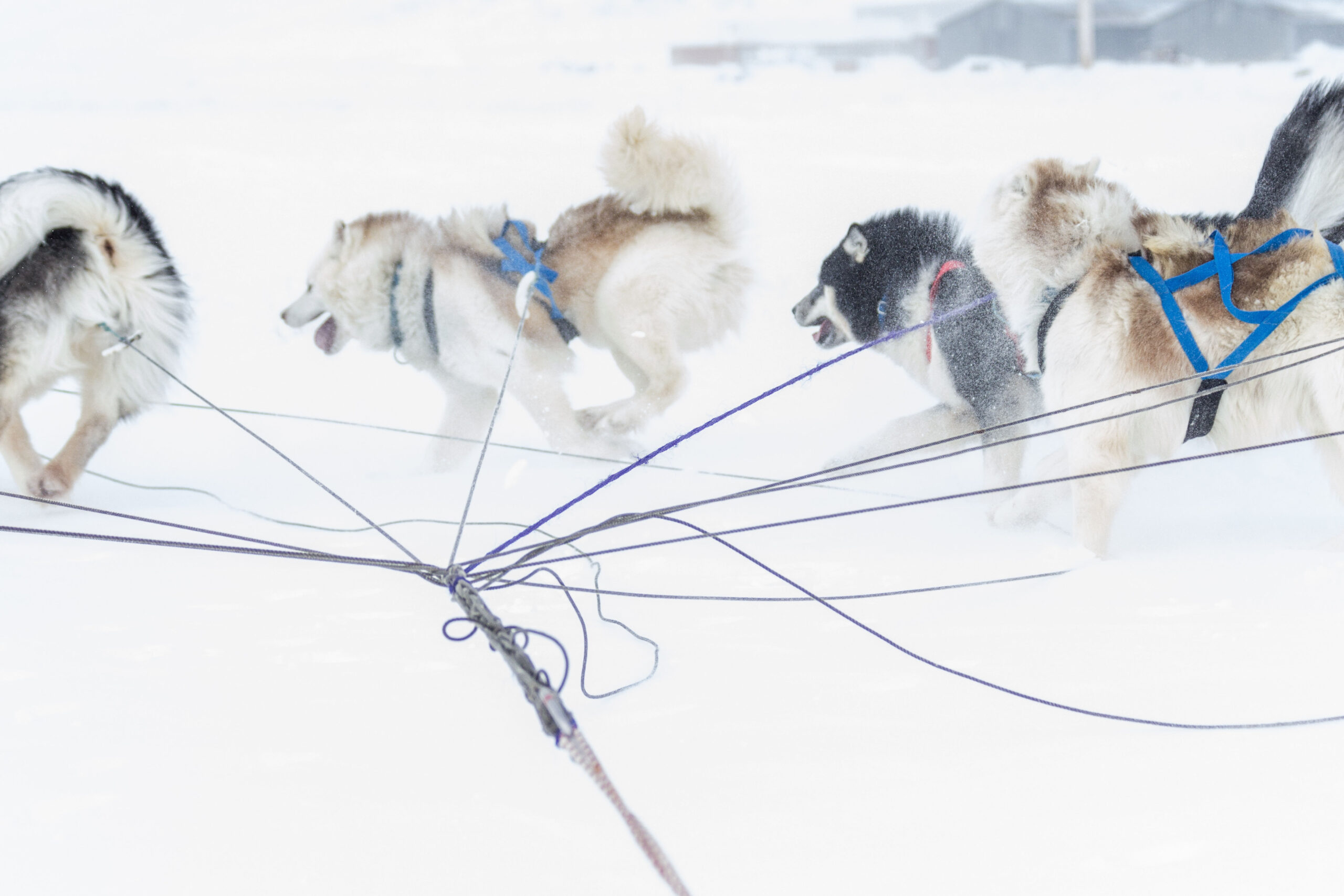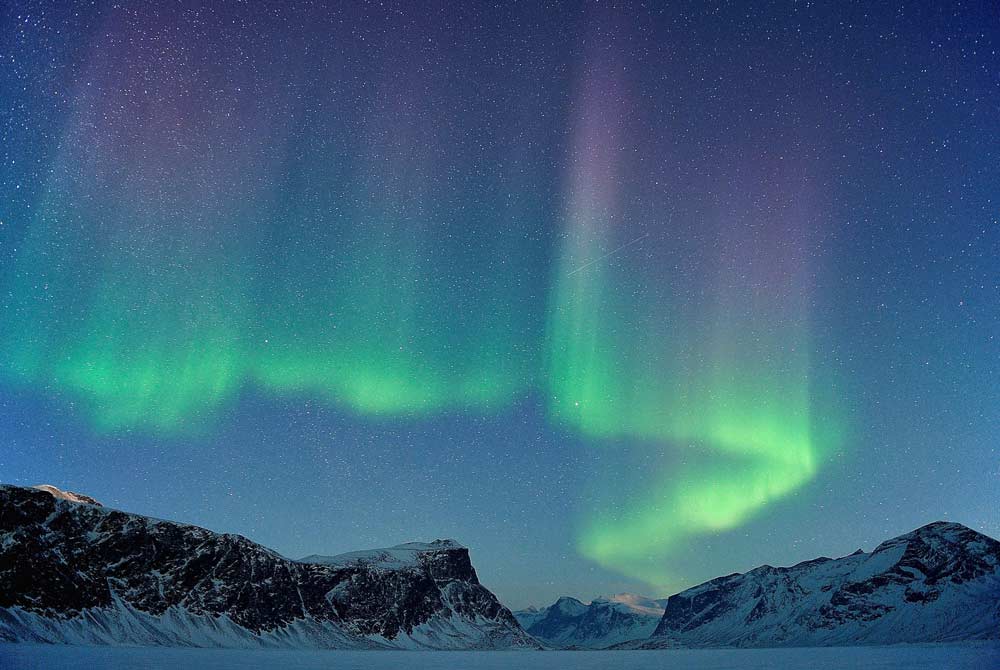Sanikiluaq is Nunavut’s southernmost community, located in the Belcher Islands of southeastern Hudson Bay about 150 kilometres (93 miles) off the coast of Québec.
It is the only permanent settlement in this entire archipelago, which is a group of 1,500 islands spread over 3,000 square kilometres (1,158 square miles).
Many of the smaller islands provide special breeding grounds for numerous species of migratory seabirds, ducks and geese. The coastal waters contain an abundance of seals, walruses and beluga whales. Expert hunting and fishing is a traditional lifestyle here, as is sea kayaking and soapstone carving.
Sanikiluaq is famous for the incredible, unique handicrafts made by its women, including dolls made of fish skin and parkas made of eider ducks.
The hamlet is named after a legendary Inuk person who once lived here named Sandy Kiluaq. He was an adopted little boy who lived in hard times, but he grew up to become the best hunter and best provider in the region, a hero to his community, so they named it after him.
850
95% Inuit
Inuktitut, English
Longitude 79° 15’ W
Latitude 56° 32’ N
Elevation 32m
The terrain near Sanikiluaq is composed of numerous rocky cliffs that tower to 155 metres (509 feet) above sea level.
Weather & Climate
The weather is variable here, usually sunny yet sometimes foggy with sudden windy storms that happen quickly in Hudson Bay. Summer temperatures range from 10°C to 25°C, winter temperatures from -10°C to -30°C.
| Average Temperature in Sanikiluaq | |||
|---|---|---|---|
| January | -22oC | February | -23oC |
| March | -17oC | April | -7oC |
| May | 1oC | June | 6oC |
| July | 10oC | August | 10oC |
| September | 7oC | October | 2oC |
| November | -5oC | December | -16oC |
HISTORY
The indigenous ancestors of the local Inuit people inhabited this area for many centuries. They arrived here from the mainland region of northern Québec. As evidenced by the numerous archaeological sites found scattered across the archipelago, the ancient Dorset and Thule cultures both lived on these islands.
- Dorset Culture (‘Tuniit’ or ‘Sivullirmiut’): 500 BC to 1500 AD
- Thule Culture (Proto-Inuit): 1000 AD to 1600 AD
- Inuit Culture (Eskimo): 1600 AD to present-day.
The archipelago first came to the attention of European outsiders when the British explorer Henry Hudson spotted these islands in 1610. After wintering further south in James Bay, his crew mutinied in 1611. Cast adrift, Hudson and his son were never seen again.
Thomas Wiegand of the Hudson Bay Company led an exploration party from Fort George, Québec (Chisasibi Cree Nation) to the Belcher Islands in the 1840s, but he did not stay the winter.
The men expanded their knowledge of the ice fields, earning great respect for their kayaking skills.
Robert Joseph Flaherty and his crew arrived here on a prospecting expedition in 1913. They were the first ‘qallunaat’ (‘people with low bushy eyebrows’ — white people, in Inuktitut) to winter here. Flaherty brought along a movie camera and later he became famous for his documentary film titled ‘Nanook of the North’ (1922).
The Government of Canada founded two settlements here in 1960: North Camp and South Camp. The community of Sanikiluaq was created in 1971 when the federal government consolidated its services and relocated all the buildings and inhabitants of the southern settlement into the northern one. The economy here is largely based on subsistence hunting, fishing, plus arts and crafts.
ACTIVITIES AND WILDLIFE
Exploring the beautiful coastlines and island landscapes of the extensive archipelago that surrounds Sanikiluaq is by far the most popular outdoor activity here.
This unique region of Nunavut is a perfect place for canoeing, sea kayaking, cross-country skiing and hiking.
Snowmobiles and all-terrain vehicles are very popular too. Overland excursions to view the abundant species of local wildlife make for wonderful arctic adventures.
You will see geese, loons, eider ducks, terns, gulls, ptarmigans, snow buntings, rough-legged hawks, peregrine falcons and snowy owls. Freshwaters contain char and whitefish; coastal waters contain cod, capelin, lumpfish and sculpin fish, plus an abundance of ringed seals, beluga whales, walrus and polar bears.On land, there are lemmings, arctic hare and arctic fox. Reindeer were introduced in 1978 after the caribou disappeared.
Tent camping after hiking in these pristine islands is a great family activity in the summertime — as igloo camping is after skiing in the wintertime! Exploring the coastlines by watercraft takes you to excellent fishing locations. Likewise, trekking inland across the untouched terrain to crystal clean lakes and rivers leads to other unforgettable fishing spots.
Local outfitters and guides are pleased to show you all of these idyllic places. They will also escort you to ancient Dorset and Thule sites nearby to experience some of the timeless ancestral culture that continues to thrive here today in the arts, crafts and proud traditions of Sanikiluaq.
ARTS AND CULTURE
A very unique handicraft of this community is the making of dolls from fish skin. The women of Sanikiluaq are gifted seamstresses and there are many talented artists producing soapstone carvings. A good place to shop for these artworks is the Mitiq Co-operative.
Parks
There are no national or territorial parks located near Sanikiluaq. The entire Belcher Archipelago is natural paradise.



